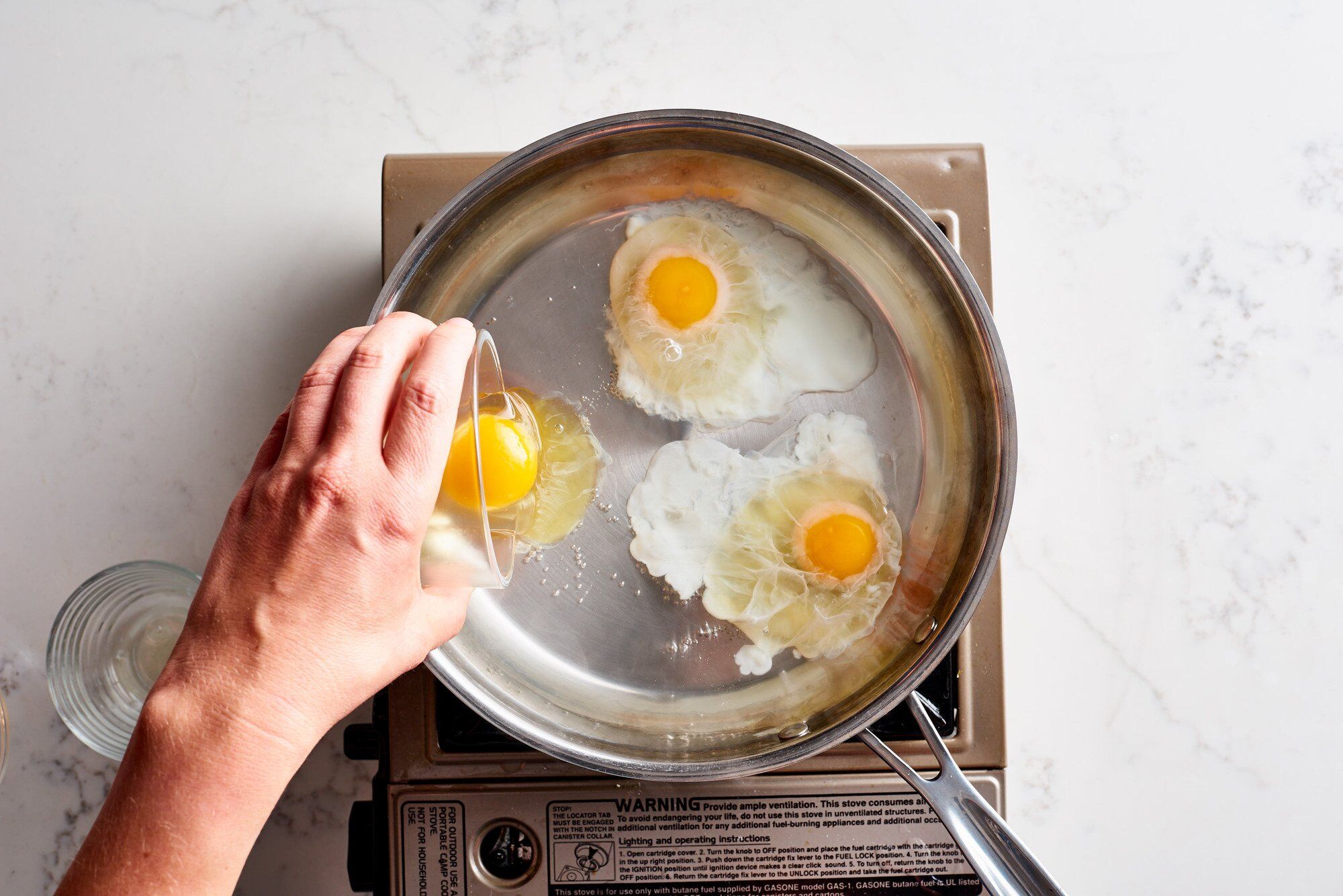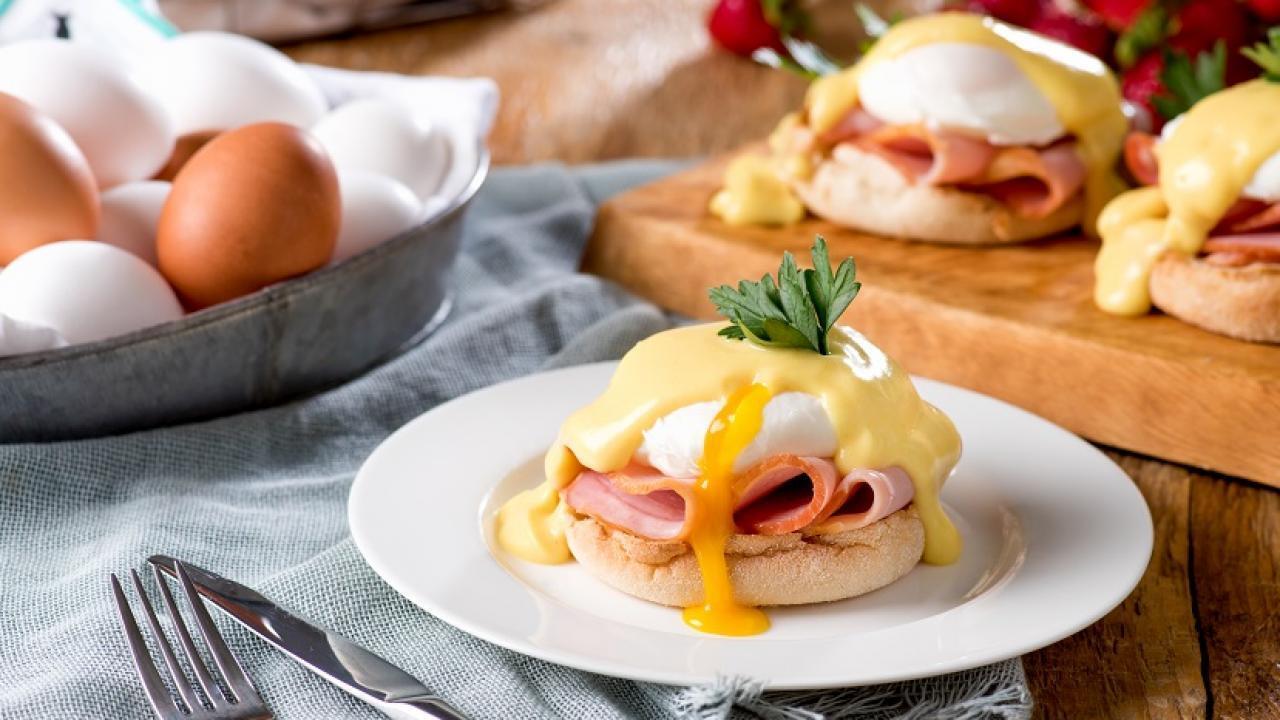LS Food
How to cook a poached egg for breakfast
You don't have to go to a restaurant in the morning to have a poached egg breakfast. This dish can be easily prepared at home.
The FoodOboz editorial team shares proven cooking methods and a few life hacks that will help you easily cope with this seemingly complicated recipe.
What is poached meat?
Let's start with a little background. Poché is a method of food processing when the product is cooked in a liquid at a temperature slightly lower than the boiling point. So, in essence, poaching is a process of stewing. As for the liquid in which a product is cooked, it can be either plain water, broth, milk, or wine.
What makes poached meat different from boiling, boiling, or stewing is its rather low cooking temperature: the liquid is not brought to a boil, but kept in the range of 71 to 82 degrees. This method allows you to cook even the most delicate foods (such as eggs, poultry, fish, and fruit), which can lose their texture, shape, and juiciness when cooked using other methods.
The most famous dish in this category is the poached egg, but this method can also be used to cook other delicate foods. Today we want to talk about eggs. There are several proven ways to prepare this dish.
Method number 1. With vinegar
Prepare a small bowl, a slotted spoon, vinegar, and a washed egg. Heat the water in a saucepan: heat it just until it starts to boil, i.e. when the first bubbles begin to appear. Reduce the heat and add a teaspoon of vinegar.
Gently crack the egg (gently is the key word, try not to damage the yolk) into a prepared bowl. Stir the water in the saucepan with a spoon and drop the egg into the resulting funnel. Wait a minute and a half, then remove the egg with a slotted spoon.
Method #2. In the microwave
Pour a teaspoon of vinegar and half a glass of water into a cup. Stir the mixture. Gently crack the egg in (make sure the egg is completely covered with water). Cover the cup with a saucer and microwave for 60 seconds. After a minute, take it out: if the protein is not yet sufficiently "set," return the egg to the microwave for another 20 seconds. Remove the finished egg from the cup with a slotted spoon and put it on warm toast or add it to porridge.
And yes, when you take the mug out of the microwave, be careful: the dishes can be very hot.
Method #3. In cling film
Grease the cling film with vegetable oil: this is necessary to prevent the boiled egg from sticking. Break an egg into the film and tie the film to make a bag. Heat water in a saucepan, and as soon as the first bubbles start to appear, put the bag with the egg in. Cook for a few minutes over low heat.
And yes, heating cling film with food is not a very healthy or safe way to cook.
Method #4. In the oven
This method is useful if you want to make several poached eggs at once. To do this, take a muffin tin, pour a tablespoon of water into each compartment, and beat one egg into them. Put in a preheated oven to 200 degrees and bake for 10-15 minutes. The cooking time depends on how runny you want the yolk to be: the longer you bake the eggs, the denser the yolk will be.
Method #5. The Pohlebkin method
This method involves stirring eggs into the soup so that the egg remains intact and does not curdle. To cook eggs using this method, you need to pour some liquid from the soup, add vinegar and a little oil. Vinegar should be taken at the rate of half a glass per liter of soup. Mix all the ingredients and dip the egg into the hot liquid.
How to cook poached eggs Benedict
Eggs Benedict is probably the most popular dish made with poached eggs. In fact, it is a simple sandwich consisting of two halves of a bun. Ham or bacon, poached eggs, and Hollandaise sauce are spread on both buns, and that's what we want to talk about.
To make Hollandaise sauce, you will need:
- eggs - 2 pcs.
- 82% fat butter - 100 g
- lemon - half
- sugar, salt, pepper - to taste
- Melt the butter over low heat in a small saucepan. Set aside to cool slightly.
- Separate the whites from the yolks. Remove the whites, put the yolks in a deep iron bowl, and beat with a whisk.
- Squeeze the juice from half a lemon. Strain the juice to get rid of the seeds (if any).
- Add a pinch of sugar and salt to the yolks with the lemon, mix with a whisk, and put the bowl in a water bath. Stirring constantly, bring the sauce to a thickening.
- Pour in the melted butter in a thin stream, while stirring. Stir with a whisk until the mass becomes smooth, homogeneous, and airy. Hollandaise sauce is ready.
And then everything is simple. Dry the bread in a toaster or in a frying pan without oil, put a slice of ham or salmon (lightly salted or smoked, at your discretion). Top with a cooked poached egg and pour warm hollandaise sauce. Eat immediately, without delay.





























